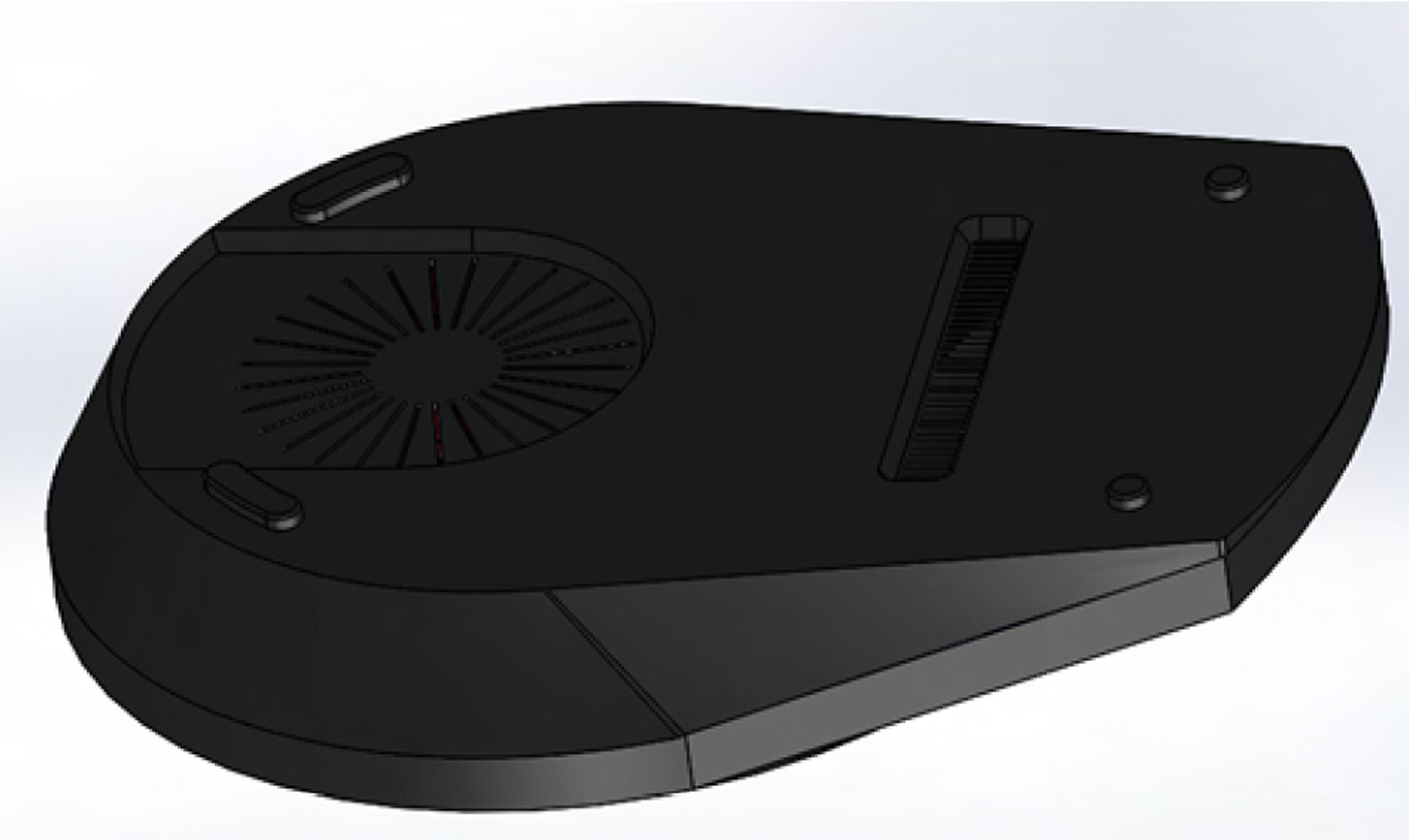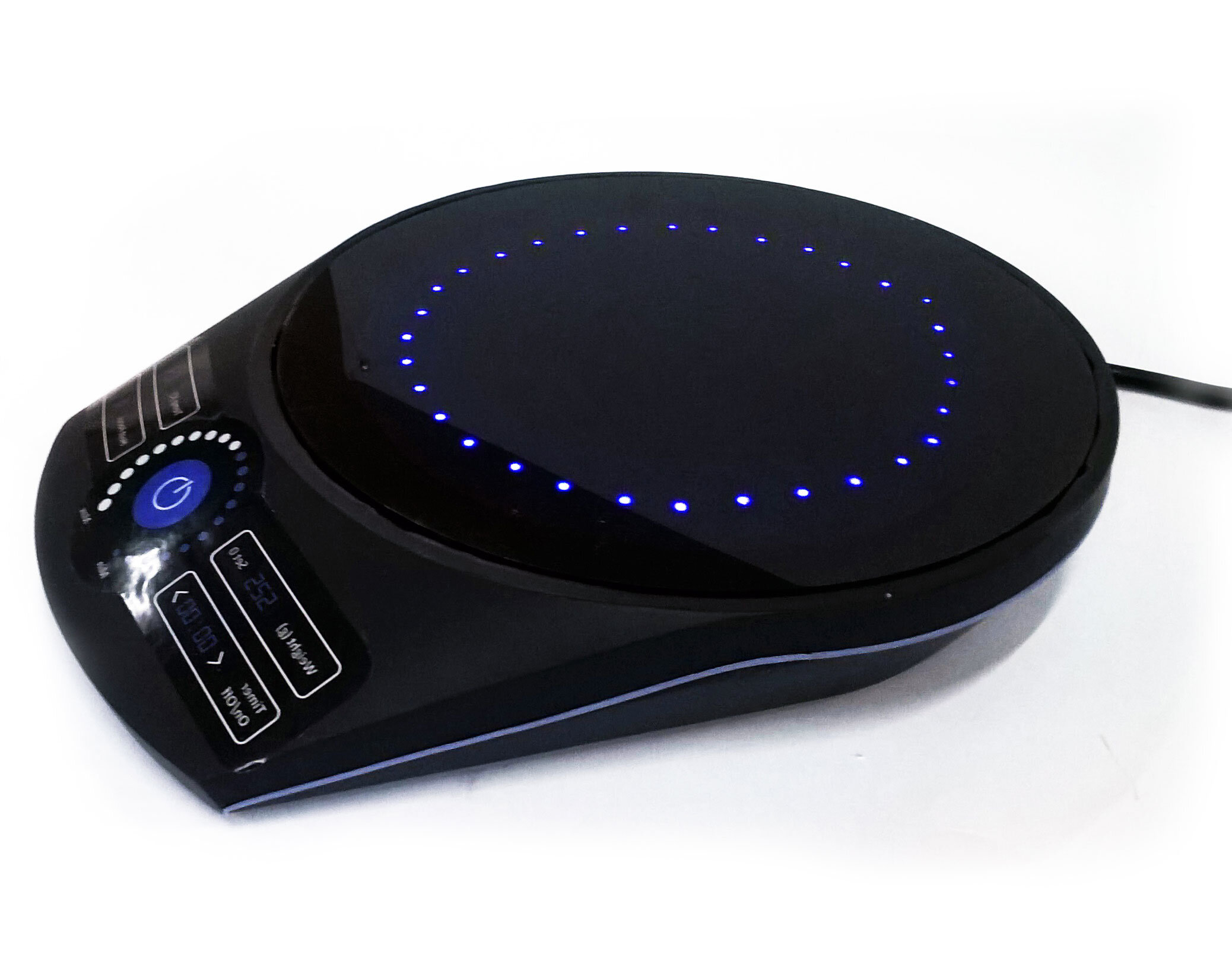
Induction Cooktop
Simple and intuitive induction cooktop design.
OVERVIEW
An Induction Cooktop is a very common kitchen appliance. As this cooking device works on electricity it is also common in cooking arrangements that have to be portable or are in a space-constrained environment.
The brief of this classroom project was to identify pain points in any existing household appliance and redesign the product solving the identified issues.
RESPONSIBILITIES & DURATION
Individual Project | Research, Prototyping, Material Exploration, Product Design
2 Months | Oct - Nov 2015
DESIGN REGISTRATION
RESEARCH
Science of Induction Cooking
Induction cooking heats a cooking vessel by electrical induction, instead of by thermal conduction from a flame, or an electrical heating element. The cooking vessel must be made of or contain a ferromagnetic metal such as cast iron or stainless steel. Heat is coming from within the pan, making this method of cooking a lot more efficient.
An induction hob contains a coil of copper wire underneath the ceramic plate, and when a ferromagnetic cooking pot is placed on top and an alternating electric current is passed through it. The resulting oscillating magnetic field induces a magnetic flux, producing an eddy current in the ferrous pot, which acts as the secondary winding of a transformer. The eddy current flowing through the resistance of the pot heats it.
During the research stage, an extensive secondary and primary research was conducted covering topics like
Parts of Induction cooker
Indian cuisine and cooking methods
Pros & Cons of Induction cooking
User study
Task analysis
Market analysis
In the primary research stage, multiple users of various categories were interviewed and their processes were recorded & observed. Users Categories who were interviewed: Homemakers, Students, Restaurant owners, Service & repair executives.
Detailed documentation of the research and design process can be found here.
KEY PAIN-POINTS
After interviewing multiple users and observing their ways of using the existing induction cookers, a lot of pain points were identified.
No visual feedback (unlike a gas stove where the size of the flame is proportional to the emitted heat)
Liquid spill invokes scare of an electric shock.
Wastage of energy if small cookware is used.
Complicated user interface.
Noisy Operation
FORM EXPLORATIONS
THE SOLUTION
“An induction cooktop with visual feedback, energy saving and simple operations”
SALIENT FEATURES
Visible Operation - Visual feedback
LEDs fixed below the top plate of the induction mimic the flames on a gas stove. The brightness of the LEDs is proportional to the power of heating power. This provides direct visual feedback to the user. Making the cooking experience similar to a gas stove.
Liquid Spill Safety - Liquid preventing air vents
All the air vents in the appliance are strategically placed such that than the ground level. This prevents any liquid on the platform seeping in into the body. Prevents any risk of electrical shock if appliance is on the spill.
Power Saving - Multiple concentric coils
Instead of a huge single coil, the coils in new design was made up of many concentric coils of different sizes. When a smaller diameter cookware is placed on the cooker, only the coils under the cookware become operational. This saves a lot of power as whole coil is not operational every time.
Smaller footprint - Material/Space saved
As most cookware is circular, the circular form of the cooktop has a smaller footprint on the kitchen platform. Also it prevents a lot of material wastage thus lower production cost and smaller waste.
Simple Operation - Minimal UI
The UI of this Induction cooktop is much simpler than the existing Chinese products available in market. Thus making it easy to operate. A big power button and a intensity dial similar to rotating knob on a gas stove.
Silent Operation - Quieter exhaust fan
The cooling fan in the Induction cooktop is generally noisy. In this design a more silent fan with more no. of blades was used which reduces the operating noise considerably without reducing the air displacement.
Added feature - Weighting scale
As an added feature a digital weighting scale was added to the product. A small scale weighting scale is useful in a kitchen setting to measure quantities while referring to a recipe. This appliance doubles as a weighting scale when it is not being used to cook.
Added feature - Heat Focus
To further help users to migrate from a gas stove to an induction cooktop, a heat focus feature is provided. This is only possible due to multiple individual heating coils working separately. Similar to a gas stove, when heat focus is turned on, the cooktop heats the cookware most in the centre. It prevents food on the sides from getting burnt.
Seam light - Visual feedback from a distance
A light STRIP runs across the joining line of the product. This light changes colour for different operation modes. So just a glance from a distance can let the user know if the product is On or Off. Useful in cases of power off count down timer.
PROTOTYPE
Thank you for going through this project ♡
Please go through more projects below.
















